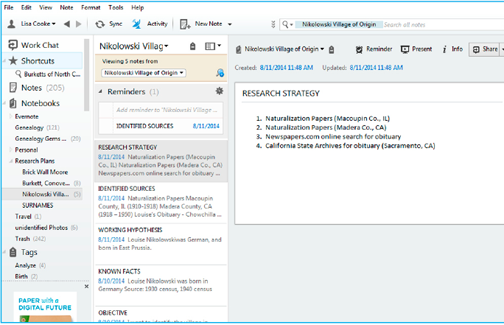Sign up for the Family Tree Newsletter Plus, you’ll receive our 10 Essential Genealogy Research Forms PDF as a special thank you!
Get Your Free Genealogy Forms
"*" indicates required fields
A genealogy research plan can help you identify the genealogy information and resources you need to answer a family history question. You know, one like “When and why between 1894 and 1900 did my third-great-grandmother drop off the face of the earth?”
Not that I would know anything about this particular problem or anything.
Having your research plan handy on your phone or laptop can help you stay focused and let you check it when you’re not at home. Keeping it on Evernote is a great way to do that, as you’ll learn in our webinar Enhance Your Genealogy With Evernote: 10 Projects to Boost Your Family History, happening Thursday, May 7, with Lisa Louise Cooke.
Evernote also lets you organize your notes, upload record images to the cloud for later analysis, and more.
Here’s a sneak peek at how to set up a research plan in Evernote, one of the projects Lisa will show you during the webinar:
- Set up a notebook in Evernote and give it a name related to the question you’re trying to answer.
- Click to select the notebook in the left-hand column, then create a note for each of the five components of your research plan. Each note will include information specific to your project:
- Objective: What do you want to accomplish? Be specific, such as “Identify Hiram Hornhoffer’s parents.”
- Known facts: What have you already learned about your ancestors? Include relationships, dates and places.
- Working hypothesis: Note the probable conclusions that you hope to prove or disprove.
- Identified sources: Which records are most likely to provide information about your hypothesis? Create a list of possible sources and note where to find each source.
- Research strategy: This is your plan of action. Determine the order in which you’ll locate each source.
- Create a tag for the project and tag any related notes.
When you’re finished, you’ll have something that looks like this:
Visit Family Tree Shop to see what other Evernote genealogy projects you’ll learn in the Enhance Your Genealogy With Evernote webinar, and to register.
ADVERTISEMENT






